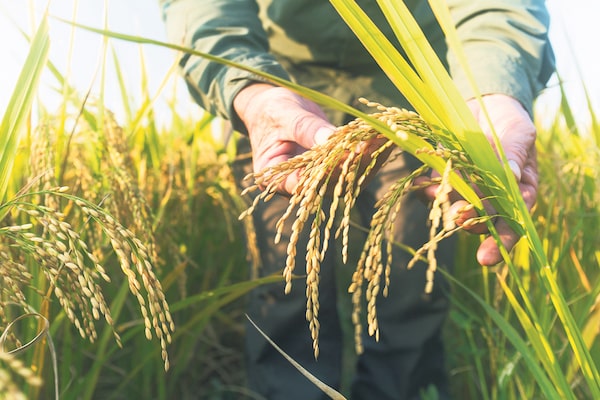
It typically takes 36 months from the last application of a prohibited substance until a certified organic crop can be harvested.SUPPLIED
More and more Canadian consumers are choosing organic food products. In 2017, 66 per cent reported spending at least some of their weekly grocery budget on organic items, compared to 56 per cent in 2016, according to the Canada Organic Trade Association. While this growth creates opportunities for organic farmers and food processors, meeting the increasing demand is not without challenges.
“Since the early 2000s, there has been a deficit in organic production in North America relative to demand,” says Jake Neufeld, CEO of Sunrise Foods International, a company trading in grain and feed. ”Our company, which has been around since 1997, initially focused on exporting North American organic grain to premium markets in parts of Asia and Europe, for example, and Canadian grain to the U.S. But in the last 10 to 15 years, we’ve been increasingly looking to source organic grain internationally to make up for a shortage in domestic supply.”
Since Sunrise Foods prides itself on delivering grain punctually and to precise specifications, there is an “emphasis on dependable supply chains and a good sourcing base,” says Mr. Neufeld. “Our customers [in the organic space] are always looking for more supplies, and a lot of food manufacturers would like to see more domestic production – that’s the current important narrative in the organic grain business.”
With its Canadian operation based in Saskatchewan, Sunrise Foods works with the province’s large concentration of organic farmers, as well as farmers in Alberta and Manitoba, he says. “Some of our products come from family farms that have been organic for decades; others come from farms that have transitioned to organic.”
While many farmers choose organic production because they are passionate about the underlying principles, the economics can also serve as an incentive, believes Mr. Neufeld.
Organic yields may be lower than with conventional crops, but better prices plus lower operating expenses (for example, inputs such as fertilizer and pesticide are not relied upon in organic crop production) typically lead to a healthier bottom line, according to the Organic Value Chain Roundtable.
Yet farmers have to obtain official certification that their farm and products are in compliance with the Canada Organic Regime. “Farmers who want to switch from conventional to organic production need a definite plan that generally takes years to implement,” says Mr. Neufeld. “This can be seen as a barrier.”
For a transition period of 36 months from the last application of a prohibited substance until a certified organic crop can be harvested, farmers are not yet eligible to charge organic premiums, explains Mr. Neufeld. He adds that in other countries, which have underutilized land or do not use prohibited substances or techniques, the transition to organic may be faster.
While stringent regulations ensure the integrity of an organic supply chain, “some international supply chains are quite complex, and we know that many food manufacturers and end users would like to see more North American production,” Mr. Neufeld says. “One of our biggest challenges is showing farmers that the long-term payoffs justify switching to organics.”
Advertising feature produced by Globe Content Studio. The Globe’s editorial department was not involved.